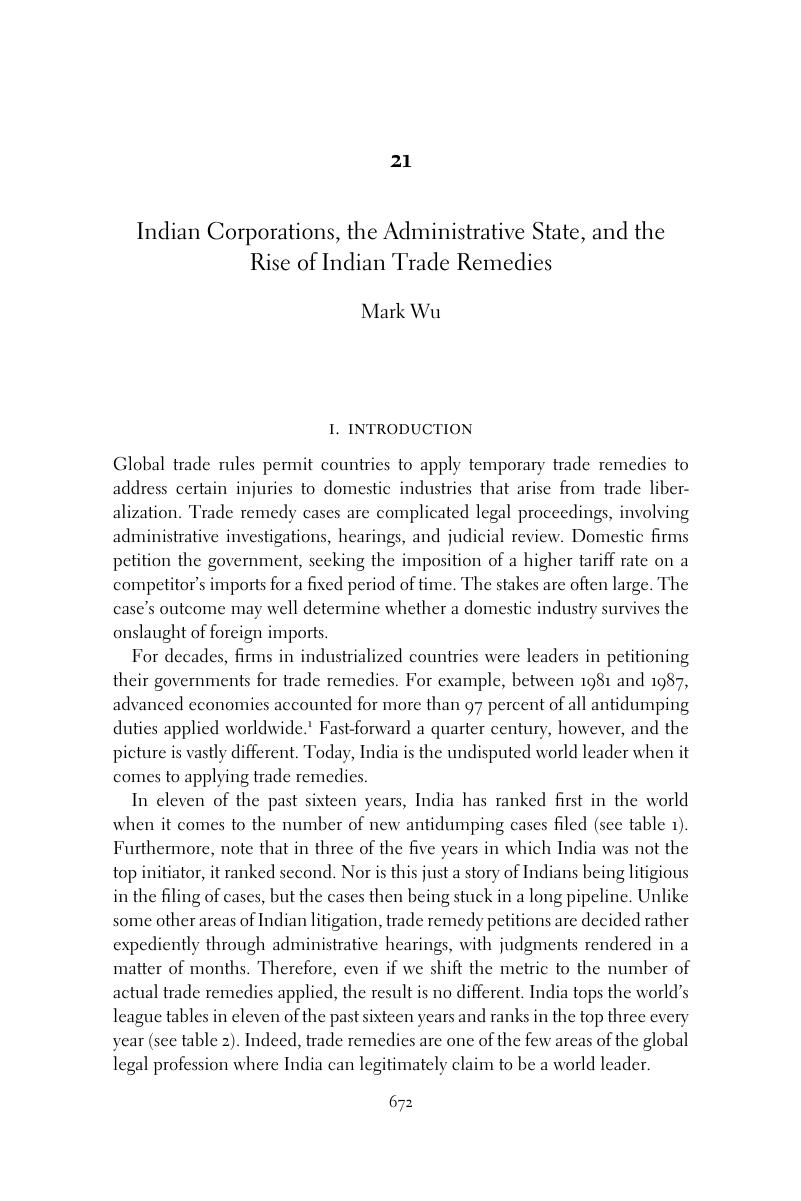 The Indian Legal Profession in the Age of Globalization
The Indian Legal Profession in the Age of Globalization Book contents
- The Indian Legal Profession in the Age of Globalization
- The Indian Legal Profession in the Age of Globalization
- Copyright page
- Dedication
- Contents
- Contributors
- Acknowledgments
- Section I Setting the Stage
- Section II The Growth of the Corporate Core
- Section III New Actors and Functions within the Corporate Core
- Section IV Regulation and Foreign Competition
- Section V Old Lawyers, New Lawyers, and Transforming Roles
- Section VI Legal Education
- Section VII Capacity Building
- 20 Equalizing Access to the WTO: How Indian Trade Lawyers Build State Capacity
- 21 Indian Corporations, the Administrative State, and the Rise of Indian Trade Remedies
- 22 Rising India in Investment Arbitration: Shifts in the Legal Field and Regime Participation
- Index
- References
21 - Indian Corporations, the Administrative State, and the Rise of Indian Trade Remedies
from Section VII - Capacity Building
Published online by Cambridge University Press: 25 May 2017
- The Indian Legal Profession in the Age of Globalization
- The Indian Legal Profession in the Age of Globalization
- Copyright page
- Dedication
- Contents
- Contributors
- Acknowledgments
- Section I Setting the Stage
- Section II The Growth of the Corporate Core
- Section III New Actors and Functions within the Corporate Core
- Section IV Regulation and Foreign Competition
- Section V Old Lawyers, New Lawyers, and Transforming Roles
- Section VI Legal Education
- Section VII Capacity Building
- 20 Equalizing Access to the WTO: How Indian Trade Lawyers Build State Capacity
- 21 Indian Corporations, the Administrative State, and the Rise of Indian Trade Remedies
- 22 Rising India in Investment Arbitration: Shifts in the Legal Field and Regime Participation
- Index
- References
Summary

- Type
- Chapter
- Information
- The Indian Legal Profession in the Age of GlobalizationThe Rise of the Corporate Legal Sector and its Impact on Lawyers and Society, pp. 672 - 704Publisher: Cambridge University PressPrint publication year: 2017


